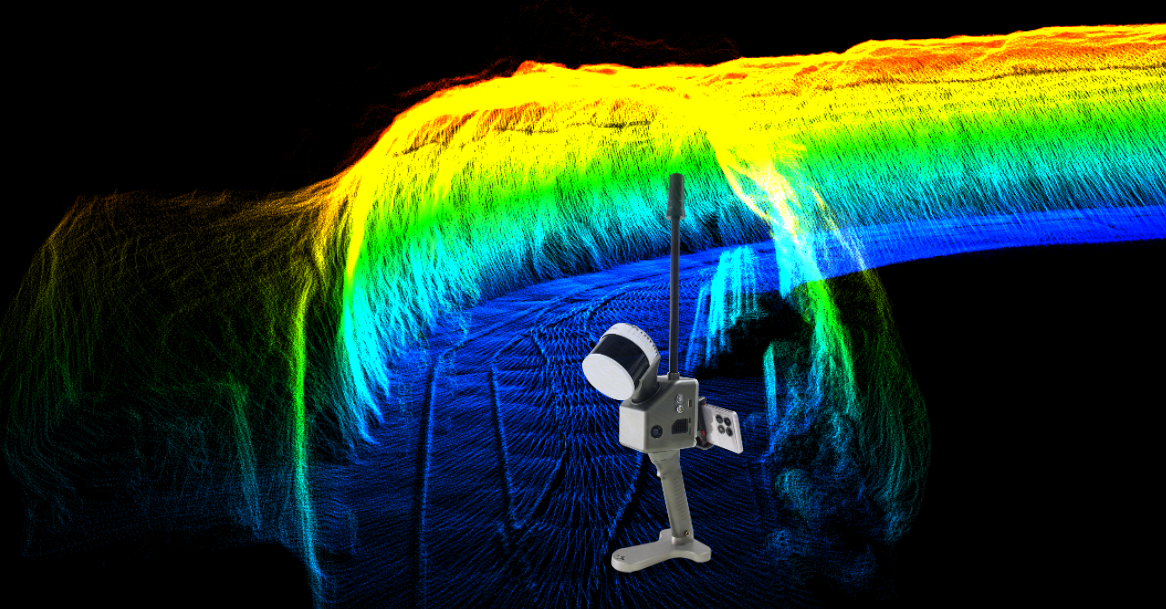
Home
Home
About Geosun
About Geosun
Products
Products
- Hardware
- Mobile LiDAR Scanning System
- gCollector Road Information Collection System
- gSpin POS System
- PPK Solution
Support
Support
News
News
Contact Us
Contact Us

In the rapidly evolving field of LiDAR surveying, two leading techniques for positioning stand out: Simultaneous Localization and Mapping (SLAM) and Global Navigation Satellite System (GNSS). Each method presents unique advantages and is suitable for different surveying applications. In this article, we will delve into the key differences between SLAM and GNSS for LiDAR surveying, examining their benefits, use cases, and the best solutions available.
SLAM technology enables surveyors to create precise maps while determining their location within a mapped environment. It combines multiple sensors—such as LiDAR, cameras, and inertial measurement units (IMUs)—with sophisticated algorithms to gather data and build detailed maps in real time. As surveyors move through an area, SLAM algorithms continuously update the map, providing accurate localization information.
GNSS technology provides exact positioning information by utilizing signals from satellite systems like GPS, GLONASS, and Galileo. In LiDAR surveying, GNSS is crucial for determining the absolute position of the LiDAR sensor, ensuring accurate georeferencing of collected data. This capability is essential for precise mapping, absolute positioning, and elevation data.
SLAM allows for the generation of up-to-date maps while determining precise locations, making it ideal for applications that require immediate data, such as emergency response and dynamic construction sites.
SLAM is particularly effective in indoor surveys and GPS-denied areas, where GNSS signals may be weak. This includes underground mines and dense urban environments. Geosun handheld SLAM LiDAR has proven successful in capturing critical data in such challenging conditions.

SLAM systems enable on-the-go mapping, allowing surveyors to collect extensive data without extensive setup. This feature is especially advantageous for rapid scanning projects, such as updating building information models (BIM) efficiently.
GNSS-based LiDAR systems feature embedded global coordinate systems, allowing for direct absolute positioning. This simplifies the process of acquiring precise geographic coordinates for LiDAR points, enhancing overall workflow efficiency.
GNSS's accurate positioning enables surveyors to revisit sites easily, facilitating change detection and dataset overlays for periodic surveys. This is particularly beneficial for large-scale infrastructure projects relying on consistent coordinate reference systems.
GNSS LiDAR sensors often support multiple returns, allowing for detailed digital terrain modeling (DTM) and effective vegetation penetration. This capability is invaluable for environmental studies, including coastline monitoring and forest inventory assessments.
Selecting between SLAM and GNSS solutions for LiDAR mapping depends on the specific requirements of your surveying project. For indoor surveys, GPS-denied environments, or rapid mapping, SLAM technology offers significant advantages. Conversely, GNSS-based LiDAR provides accurate absolute positioning and enhanced data repeatability.
In many cases, a hybrid approach combining both SLAM and GNSS may yield the best results, allowing surveyors to leverage the strengths of both technologies for comprehensive and accurate surveying outcomes.
By understanding the unique strengths and applications of SLAM and GNSS for LiDAR surveying, professionals can make informed decisions about the best technology for their specific needs. Harnessing these advanced surveying approaches will enhance the accuracy and efficiency of your surveying projects.
URL:https://www.geosuntech.com/News/255.html
Previous:Relative Accuracy vs. Absolute Accuracy in LiDAR: What You Need to Know
Next:LiDAR Accuracy vs. LiDAR Precision: What is the Difference?




